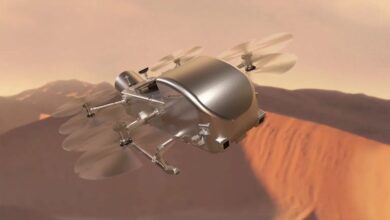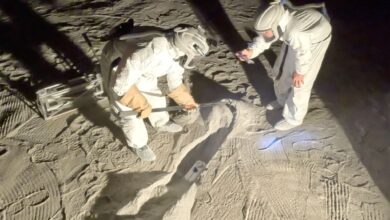NASA Stennis Achieves Major Milestone for In-Flight Software Mission

The Autonomous Systems Laboratory team at NASA’s Stennis Space Center recently cleared a major milestone for a historic in-flight mission to demonstrate the capabilities of a site-developed autonomous software package.
The NASA Stennis team passed its software Flight Readiness Review for the first flight opportunity of ASTRA (Autonomous Satellite Technology for Resilient Applications), a partnership effort with Sidus Space. The aerospace company is set to launch its premier satellite platform, LizzieSat (LS), designed to provide turnkey access to space, in 2024. ASTRA Flight Software Version 1.0 now has been loaded on the ASTRA flight hardware and the ASTRA flight unit subsequently installed on the Sidus Space LS-1 satellite.
“This is a significant achievement,” Stennis Center Director Dr. Rick Gilbrech said. “This will be the first time NASA Stennis has flown software to space, and we are excited to join with Sidus Space for the mission. It is a great opportunity to demonstrate the capabilities of the NASA Stennis software, as well as the center’s autonomous systems team.”
The recently completed Flight Readiness Review involved NASA Headquarters stakeholders and site engineers, as well as safety and mission assurance personnel, clearing the way for the mission to proceed. The review focused on verifying the baseline software version is ready to fly and is expected to function as needed.
The initial version of the software includes vehicle systems management capabilities, as well as the ability to update software versions and add capabilities during the mission, which could last for more than two years.
“The integration of the NASA Stennis ASTRA software will provide us with the necessary flight heritage for future deep space missions, and we are excited to begin this process,” stated Carol Craig, Founder and CEO of Sidus. “This is an important step for the two organizations and the industry as a whole as we step further into space and beyond.”
The ASTRA project began as a proposal by early career employees at NASA Stennis. Sidus Space is responsible for the launch, deployment, and mission operation of the LS-1 satellite, with the NASA Stennis ASTRA hardware/software flight unit scheduled as one of six planned payloads. At some stage of the mission, the NASA Stennis Autonomous Systems Laboratory team will have the opportunity for the ASTRA payload to send commands to the Sidus flight computer and have the ASTRA Flight Software perform targeted satellite mission operations.
“This is as real as it gets – a chance to truly ‘test as you fly,’” NASA Stennis Autonomous Systems Laboratory Branch Chief Chris Carmichael said. “It is a great opportunity to demonstrate the power and capabilities of our system and opens the door to continued work in intelligent and autonomous systems.”
Autonomous systems represent a new line of business for NASA Stennis. A recently released strategic plan calls for the center to accelerate the development of intelligent and autonomous aerospace systems needed for government and industry missions.





